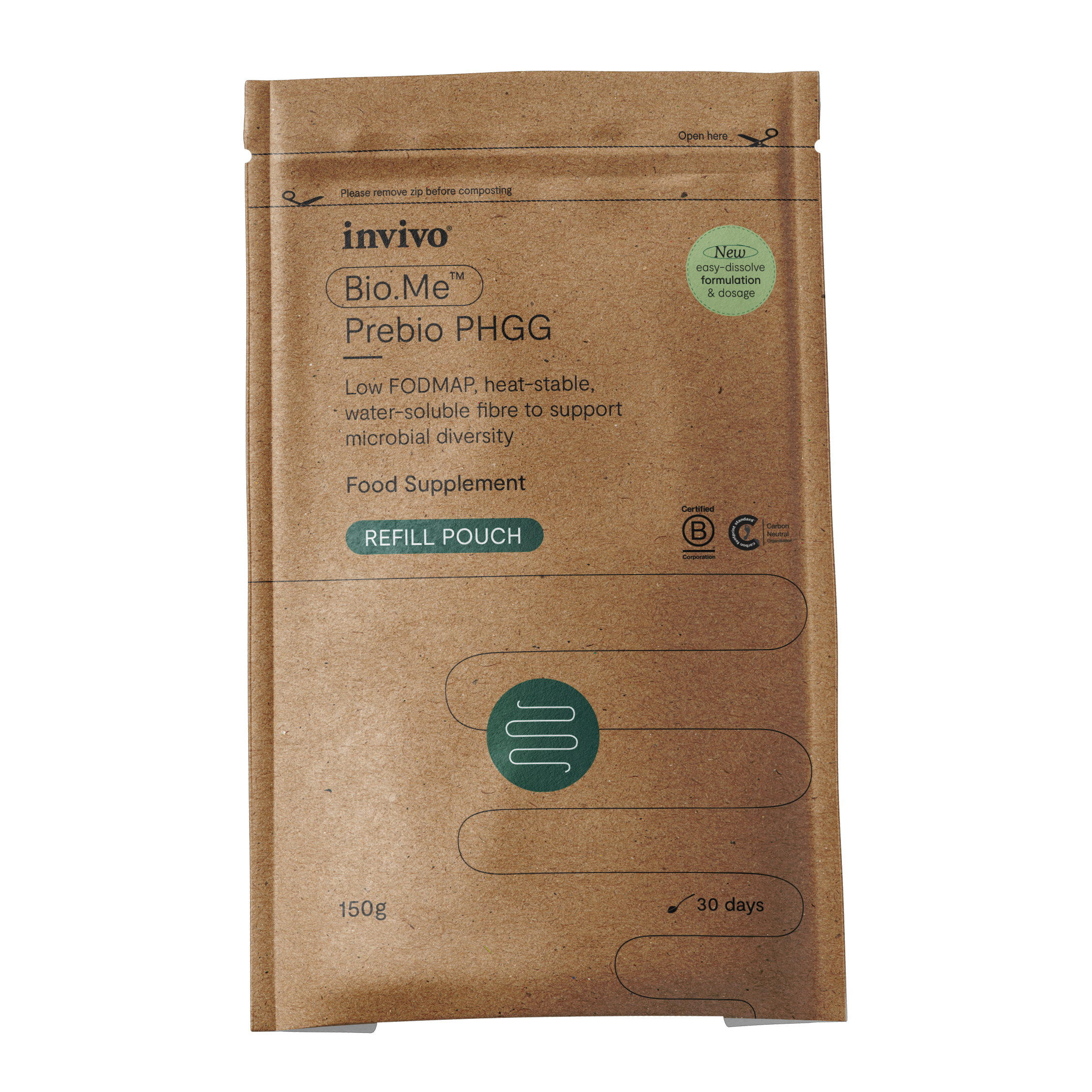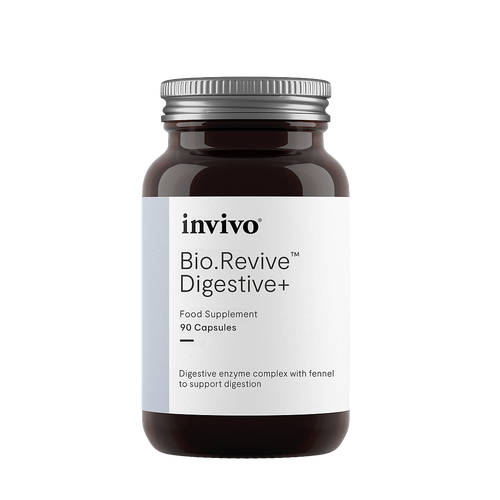Research Top 10 2018

OUR TOP 10 PIECES OF RESEARCH READ IN 2018
In no particular order
1.
Akkermansia muciniphila in the Human Gastrointestinal Tract: When, Where, and How?
I came across this paper after reading about the effects of polyphenols on increasing levels of Akkermansia, and the levels of it within IBD disorders with relation to mucin production and degradation. A really nice walkthrough of all the areas that it sits in the body and a reminder that nothing should be thought of in isolation.
Kate Newton
Microorganisms. 2018 Sep; 6(3): 75; doi: 10.3390/microorganisms6030075
2.
Study on the Effects of an Oral Lactobacilli and Lactoferrin Complex in Women with Intermediate Vaginal Microbiota
In the vagina of healthy reproductive-aged women, several microbial species maintain a finely tuned mutualistic relationship with the host providing the first-line of defence against the colonisation by opportunistic pathogens, which are the leading cause of dysbiosis or vaginal infections. In this study the oral consumption of a specific lactobacilli/lactoferrin complex was shown to be an effective treatment for supporting vaginal health.
Sue Camp
Arch Gynecol Obstet. 2018 Jul;298(1):139-145. doi: 10.1007/s00404-018-4771-z
Arch Gynecol Obstet. 2018 Jul;298(1):139-145. doi: 10.1007/s00404-018-4771-z
3.
Gut microbiota modulation accounts for the neuroprotective properties of anthocyanins
I was excited about this as the small humble berry brings us so many benefits. What’s more wonderful is that here in the UK they grow so freely. Using plants that grow around us to support our health makes great sense.
Louise Joyce
Scientific Reports. 2018 Jul;8 11341. doi:10.1038/s41598-018-29744-5
Scientific Reports. 2018 Jul;8 11341. doi:10.1038/s41598-018-29744-5
4.
Variations in Oral Microbiome Profiles in Rheumatoid Arthritis and Osteoarthritis with Potential Biomarkers for Arthritis Screening
A relatively small study looking at the potential for using the oral microbiome for diagnostic purposes in the fields of RA & OA and differentiating between the two, both areas where a quicker diagnosis can make a difference to treatment outcomes. I find the potential for utilising the microbiome as a diagnostic marker really interesting.
Kate Newton
Scientific Reports. 2018 Nov;8: 17126. doi: 10.1038/s41598-018-35473-6
Scientific Reports. 2018 Nov;8: 17126. doi: 10.1038/s41598-018-35473-6
5.
Women and Their Microbes: The Unexpected Friendship
This paper gives a brilliant overview of the specific microbiome responsible for female reproductive health and also potentially the health of their offspring. There has been an exponential interest in this area over the last two years and it has been consolidated at Invivo by the research being done by our probiotic partner Winclove as well as the GI masterclass course by Dr Jason Hawrelek. This paper stimulated new thinking about maternal microbial ecology and it informs key foundational principles for Invivo development moving forward.
Humphrey Bacchus
Trends in Microbiology. 2018 Jan;26(1) doi.org/10.1016/j.tim.2017.07.008
Trends in Microbiology. 2018 Jan;26(1) doi.org/10.1016/j.tim.2017.07.008
6.
Review: Maternal Health and the Placental Microbiome
In another re-write of our biology text books, we are beginning to recognise that not only does the placenta have its own microbiome, but that it can effect the health of mother and baby, and is implicated in pre-term births. There is an exploding number of papers on this subject, but I particularly enjoyed this review.
Debbie Cotton
Placenta. 2017 Jun;54 30:37 doi.org/10.1016/j.placenta.2016.12.003
Placenta. 2017 Jun;54 30:37 doi.org/10.1016/j.placenta.2016.12.003
7.
The Plastic Human Brain
A great paper that gives the historical context of neuroplasticity and then explains how it effects the early learning of a skill.
Deirdre Nazareth
Restor Neurol Neurosci. 2009;27(5):521-38. doi: 10.3233/RNN-2009-0519.
Restor Neurol Neurosci. 2009;27(5):521-38. doi: 10.3233/RNN-2009-0519.
8.
The Germ-Organ Theory of Non-Communicable Diseases
The concept that disease can result from a loss of beneficial commensal bacteria or an overgrowth of resident bacteria that have the potential to cause disease, termed ‘pathobionts’, is a commonly used guide for contemporary microbiota research. This paper argues that germ theory is still strongly influencing microbiota research and that this narrow viewpoint of a ‘pathobiont-disease’ relationship is flawed and fails to capture the contribution of microbial community ecology to health and disease. The authors propose that dysbiosis is a state of microbial organ dysfunction, a condition in which the gut-associated microbial community becomes a liability because the host no longer maintains proper control over the ecosystem. The most significant aspect of this control is that of the virtuous cycle that maintains anaerobiosis in the colon, which impairs the ability of the host to limit the flow of oxygen into the gut lumen. This gives rise to the most consistent and robust ecological pattern observed during gut dysbiosis: a shift in the microbial community structure from obligate to facultative anaerobes.
There’s a lot of shifting pieces in the microbial ‘puzzle’ coming out in the research, which shines a light on some of our flawed understandings. It’s time to open our minds to a new way of thinking.
Lucy Rothwell
Nature Reviews Microbiol. 2018 Feb;16(2):103-110. doi: 10.1038/nrmicro.2017.158
Nature Reviews Microbiol. 2018 Feb;16(2):103-110. doi: 10.1038/nrmicro.2017.158
9.
Humans as Holobionts: Implications for Prevention and Therapy
This paper articulates much of the core thinking at Invivo. Humans and their gut microbiota can be considered as holobionts (in the sense that the fitness of the host depends on, and cannot be seen separate from, its microbiota). Recent insights in human gut biology indicate the existence of alternative stable states of the gut microbiota–host symbiosis representing health, pre-disease, or different diseases. What implications does this have for the future design of therapeutic interventions and diagnostics? Questions we are asking ourselves all the time.
Humphrey Bacchus
Microbiome. 2018 May 6:81. doi.org/10.1186/s40168-018-0466-8
Microbiome. 2018 May 6:81. doi.org/10.1186/s40168-018-0466-8
10.
An Inflammatory Review of Glucocorticoid Actions in The CNS
I love anything Dr Robert Sapolsky writes. He discusses scientific concepts in ways that are not only easy to understand, but are beautiful. This is a nice review of how the central nervous system responds to glucocorticoids in an inflammatory way.
Deirdre Nazareth
Brain Behav Immun. 2007 Mar;21(3):259-72. doi: 10.1016/j.bbi.2006.11.006
Brain Behav Immun. 2007 Mar;21(3):259-72. doi: 10.1016/j.bbi.2006.11.006
Let us know what your favourites are…



